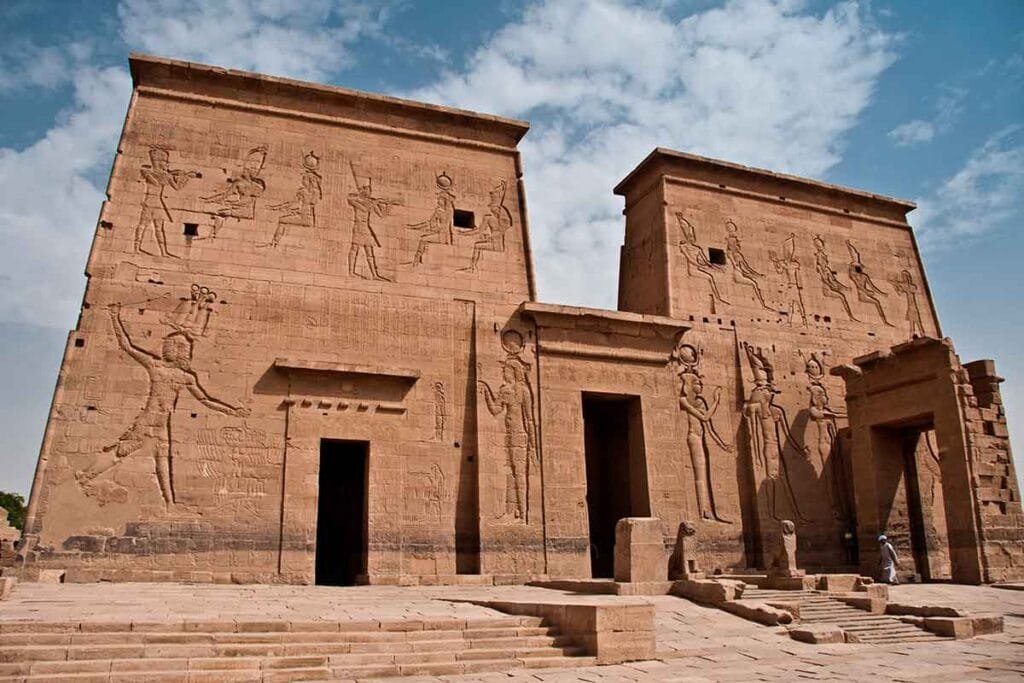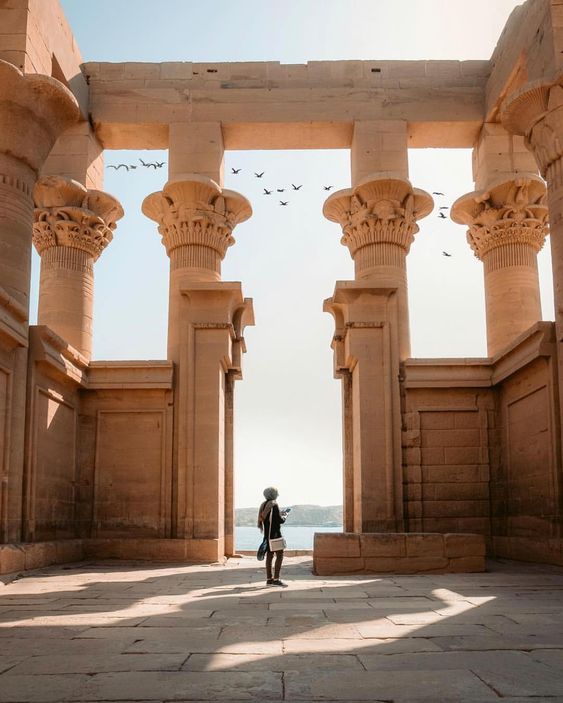Nestled on an island in the Nile River, Philae Temple is one of Egypt’s most stunning and historically significant temples. Known for its grandeur and its association with the goddess Isis, the Philae Temple is an iconic example of Egyptian architecture and religious devotion. The temple complex, originally built during the reign of Pharaoh Ptolemy II in the 4th century BCE, continued to be expanded and modified by successive rulers, including the Romans. Located in the First Cataract of the Nile near Aswan, Philae Temple was dedicated to Isis, the goddess of magic, love, and motherhood, and served as a major center for her worship.
Philae is famous for its remarkable preservation and striking beauty, and it has long been a destination for historians, archaeologists, and travelers alike. Its architectural design incorporates both Egyptian and Greco-Roman elements, reflecting the fusion of cultures that occurred during Egypt’s Hellenistic period. The temple complex is home to impressive pylons, columns, and chambers, as well as stunning reliefs and inscriptions that tell stories of the ancient gods and pharaohs.
One of the most remarkable aspects of the Philae Temple is its relocation in the 1960s, when the construction of the Aswan High Dam threatened to submerge the entire temple complex. Thanks to an international effort led by UNESCO, the entire island, along with its temples, was meticulously moved to a nearby island, Agilkia, where it stands today as a symbol of Egypt’s commitment to preserving its cultural heritage. The Philae Temple is now a UNESCO World Heritage site and continues to attract visitors from around the world who come to admire its beauty and learn about its rich history.








